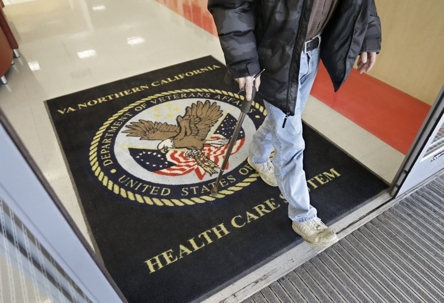A USA TODAY investigation found that for years, the VA has been hiding medical mistakes by VA doctors and nurses. In secret settlement deals with dozens of doctors, nurses and health care workers, the VA has promised to conceal serious mistakes, including dangerous medical errors. In at least 126 cases, the VA initially found the providers’ mistakes were so serious that they should be fired. But in nearly 75% of those settlements, the VA agreed to purge negative records from personnel files or give neutral or positive references to prospective employers. In 70 of the settlements, the VA banned employees from working in its hospitals for years — or life — but promised to conceal the specific reasons why.
The VA has been under fire in recent years for serious problems, including revelations of life-threatening delays in treating veterans in 2014 and efforts to cover up shortfalls by falsifying records. New VA leaders promised accountability, including increased transparency and a crackdown on bad employees.
Since then, the VA has fired hundreds of health care providers but details of each case — including the names of fired doctors — largely remain secret. The excuse offered by the VA has been that federal privacy laws protecting employees’ privacy outweighed the public’s right to know about problems involving veterans’ care.
Restricting Settlements, Not Doctors
In response to USA TODAY’s findings, the VA Secretary has ordered that all future settlement deals with employees involving payments of more than $5,000 be approved by top VA officials in Washington. In the past, decisions about most deals were left to local and regional officials. Local and regional officials had varying degrees of settlement authority – often settlements up to $150,000 locally and up to $300,000 at General Counsel, without involving the Department of Justice in Washington. This new policy may well present additional obstacles and delays for injured plaintiffs rather than badly needed oversight for negligent physicians. It seems to put the scrutiny on attorneys within the VA trying to resolve claims rather than on the physicians responsible for the errors. In addition, if all settlements nationwide must receive approval from top VA officials in Washington, that will further slow an already overburdened, lengthy settlement process. This policy change doesn’t address the on-going issues of quality of care and disclosure.
Weak Medical Malpractice Reporting Requirements
Under a nationwide VA policy in place for nearly three decades, the agency has failed to report malpractice events for podiatrists and other kinds of medical providers, including thousands of nurses and physician’s assistants working for the agency. VA officials say the agency is only required under federal law to report medical doctors and dentists, and that all other providers are optional.
Congress created the national clearinghouse in 1986 to prevent problem medical workers from crossing state lines to escape their pasts and keep practicing. The VA said it will review its policy of reporting only some medical professionals to the national data bank following USA TODAY’s investigation. But the national data bank is not available to consumers, only to health care providers and insurers. While this might prevent some providers from gaining future employment, it never provides information to consumers about providers with repeat medical mistakes.
A Conspiracy of Silence
The VA’s policy about medical mistakes is clear: Patients should be notified as soon as possible. But this policy has not been implemented in many notable instances. In the case of Dr. Thomas Franchini, formerly podiatrist for the VA in Maine, the VA failed to notify patients of his surgical malpractice until after the statute of limitations expired. Franchini was found by the VA to have made medical mistakes that harmed 88 patients. “We found that he was a dangerous surgeon,” former hospital surgery chief Robert Sampson said during a deposition in an ongoing federal lawsuit against the VA. But VA agency officials didn’t fire Franchini, didn’t report him to a national database that tracks problem doctors, failed to notify state regulators, and failed to notify patients that his malpractice caused their on-going injuries.
Instead, the VA let him quietly resign and move on to private practice in New York City. In 2012 — two years after the VA revoked Franchini’s clinical privileges, the VA still kept Dr. Franchini’s malpractice secret from patients. This 2-year time frame has great legal significance, because injured victims of medical malpractice have only 2 years from the date of negligence to present a malpractice claim to the VA. Rarely, injured victims can bring claims beyond 2 years under the “discovery rule” when they could not have learned of the negligence or cause of the injury in a 2-year window, but this rule is often narrowly interpreted favorably towards physicians. Failing to disclose known medical malpractice to patients for years not only violates the VA’s own policy, but points to a larger pattern of fraud and concealment designed to avoid paying injured plaintiffs compensation for injuries caused by the VA.

